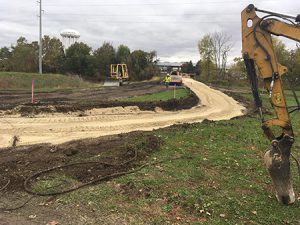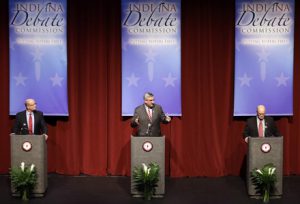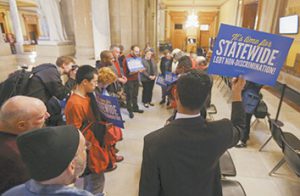Amstutz is advocate, storyteller for Indiana
After leaving Indianapolis city government when the administration changed from Bart Peterson to Greg Ballard, Keira Amstutz in 2008 became the highly visible face of Indiana Humanities.

After leaving Indianapolis city government when the administration changed from Bart Peterson to Greg Ballard, Keira Amstutz in 2008 became the highly visible face of Indiana Humanities.

Here in Indianapolis, more people attend cultural events than they do sporting events, generating a stronger economic impact.
Although lawmakers OK’d less than half the $50 million annual pledge business leaders wanted for expanding state-funded preschool, they passed a major infrastructure bill that businesses favored.
Addressing everything from more direct flights to increased funding for emerging technologies, legislators gave businesses plenty to be happy about in 2017.
The final version of the bill eschews a proposed $1 per pack cigarette tax increase. But it includes many of Gov. Eric Holcomb’s priorities.
An Indiana Senate panel on Thursday advanced a two-year state budget plan with significant differences in funding for roads, entrepreneurship and education from the House’s plan.
The governor is so pleased with the progress of the Regional Cities program implemented last year that he’s seeking more money from the Legislature to advance it.

Gov.-elect Eric Holcomb, who announced his legislative agenda Thursday, has roughly the same idea as Gov. Mike Pence when it comes to investing in early-stage Indiana companies, but wants to pay for the plan through a different fund.
After (in)arguably the most tumultuous year in the 200-year history of the state of Indiana (and that Cubs championship), you can rest assured the 2017 legislative session promises none of that degree of drama.
Average wages for Hoosiers have increased 25 percent since 2005, growing from $35,400 to $44,116. Meanwhile, personal income in Indiana had the 11th-fastest rate of growth between the first two quarters of this year.
The three gubernatorial candidates—Democrat John Gregg, Republican Eric Holcomb and Libertarian Rex Bell—debated issues relating to jobs and the economy at the debate at University of Indianapolis.

The amount was more than double the $90 million anticipated by the General Assembly and represented a third of amnesty-eligible liabilities.
The modern reality is that Indiana continues to lead the nation in the percentage of our workforce employed in manufacturing. And the level of employment in such jobs has risen continually since the Great Recession began.
Indiana economists and finance experts have mixed reviews about how much of what Pence has touted on the campaign trail should be credited to him.

More Hoosiers are working than ever. Hoosier employers have added nearly 150,000 jobs since 2013, while Indiana’s unemployment rate has plummeted from more than 8 percent to 4.8 percent.
The Republican’s pick to replace Mike Pence on the ballot should take a page from Mitch Daniels’ playbook.
The Republicans should pick a candidate for governor who is open to new ideas about transportation funding, the environment and a host of other key issues.
Last month, economist Michael Hicks and the Ball State Center for Business and Economic Research released a study that is primarily focused on local economic development efforts. Yet several reports on the study, including IBJ’s “Ball State study: State too focused on landing ‘footloose’ jobs,” are clearly misguided. In the study, Hicks notes “Indiana is […]
The funding plan draws down the state's $2 billion budget reserve and also gives about $580 million to city and county governments for road projects.
Here’s a summary of the outcome of major legislation in the 2016 General Assembly.

